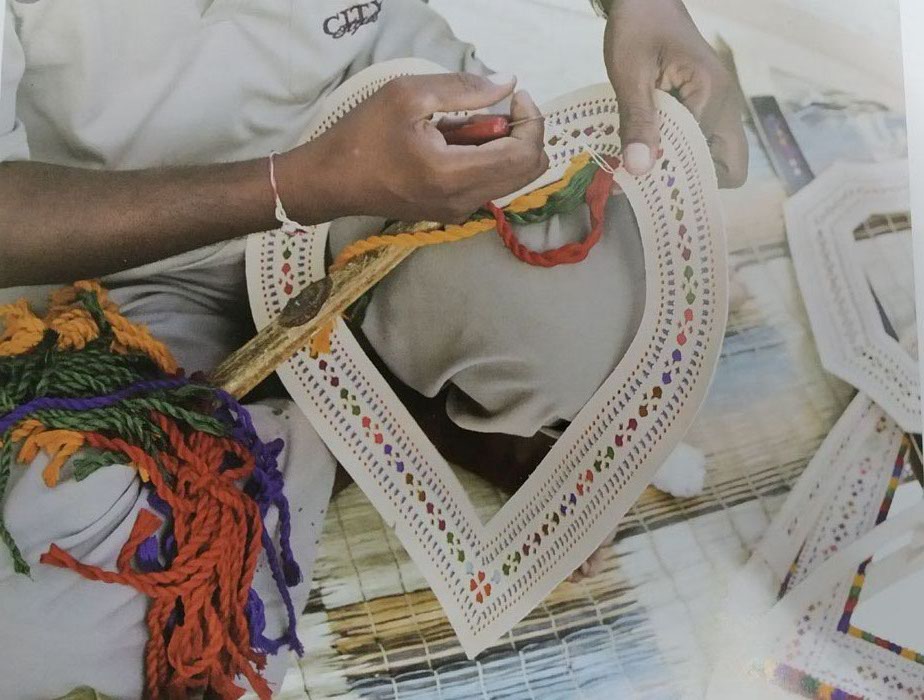
Constructed garments, Apparel, Domestic Arts/Crafts, Embroidery, Festival Arts/Crafts
Gamosa/ Sacred Cloth of Assam
The Gamosa, also known as the Gamusa, is an important item for the indigenous people of Assam. It’s a white rectangular piece of fabric with a red border on three sides and red woven motifs on the fourth (other colours are also used in addition to red). While cotton yarn is the most commonly used to make a gamosa, pat silk gamosas are also available for special occasions.
The word Gamusa literally translates to ‘something to clean the body with’ (‘Ga’ meaning body and ‘musa’ meaning to wipe), but defining gamosa as a towel is inaccurate. The term gamosa comes from the Kamrupi word gamsaw, which refers to the fabric used to cover the Bhagavad Purana (a religious Hindu text) at the altar. The Gamusa derives its origins from the Tai people or from other people in East and South-East Asia who use similar articles.
Though it is commonly used to wipe the body after a bath (an act of purification), the Gamusa’s use is not limited to this. It is used to cover the altar or the scriptures in the prayer chamber. Any sacred item is never set on the ground directly, but rather on a gamusa. It is also worn as a tongali (waistcloth) or a loincloth by farmers, fishermen, and hunters (suriya). It is a part of a Bihu dancer’s attire as they tie it around their head. It is worn around the neck in the prayer hall (naamghar) and is traditionally worn over the shoulder to indicate social status. During Bihu, guests are greeted with a gamusa and tamul (betel nut), and elders are greeted with gamusas (also known as bihuwan in this case).
Gallery
YOUR VIEWS
PRACTITIONERS: INDIA
Access 70,000+ practitioners in 2500+ crafts across India.
BIBLIOGRAPHY
10,000+ listings on arts, crafts, design, heritage, culture etc.
GLOSSARY
Rich and often unfamiliar vocabulary of crafts and textiles.
SHOP at India InCH
Needs to be written.





